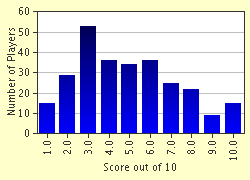Quiz Answer Key and Fun Facts
1. The spiritual father of the peaceful revolution movement is no doubt Mohandas Gandhi, whose resistance to British rule resulted in independence for India in 1947. What name did Gandhi give to his philosophy of nonviolent resistance?
2. 1974: a movement called the Carnation Revolution was successful in changing the government of which country, from an authoritarian dictatorship to a liberal democracy?
3. The 1986 EDSA Revolution, also known as the People Power Revolution, involved millions of peaceful demonstrators which toppled the President of which country?
4. The winds of change began blowing in the late 1980s over the republics which made up the former Soviet Union. The movement started in 1987 in the Baltic States of Latvia, Estonia, and Lithuania. What name did this movement for independence in the Baltic States become known as?
5. A movement began in Romania in 1990 by protestors from the University of Bucharest, who demonstrated in support of their demand that former members of the Communist Party should not be permitted to run in the upcoming election. What was this movement called?
6. In Czechoslovakia in late 1989, mass demonstrations began by the populace which led to the overthrow of the Communist government. What name was given to this nonviolent movement?
7. Moving now into the 21st century, we find that all was not smooth sailing for the former Soviet republics. Several of them experienced severe growing pains in their efforts to become viable democracies. In Georgia in late 2003, massive demonstrations erupted throughout the country following parliamentary elections widely believed to be rigged in favor the incumbent Shevernadze. What did this movement come to be called?
8. Massive demonstrations took place in Ukraine in late 2004 following rigged elections there. What did this movement come to be called?
9. In 2005 in Kyrgyzstan massive protests followed a rigged election, and the President eventually resigned and left the country. What did this revolution come to be called?
10. This series of massive demonstrations came to be called the "Cedar Revolution"; they followed the assassination of the Prime Minister. In which country did this 2005 revolution take place?
Source: Author
chessart
This quiz was reviewed by FunTrivia editor
gtho4 before going online.
Any errors found in FunTrivia content are routinely corrected through our feedback system.

